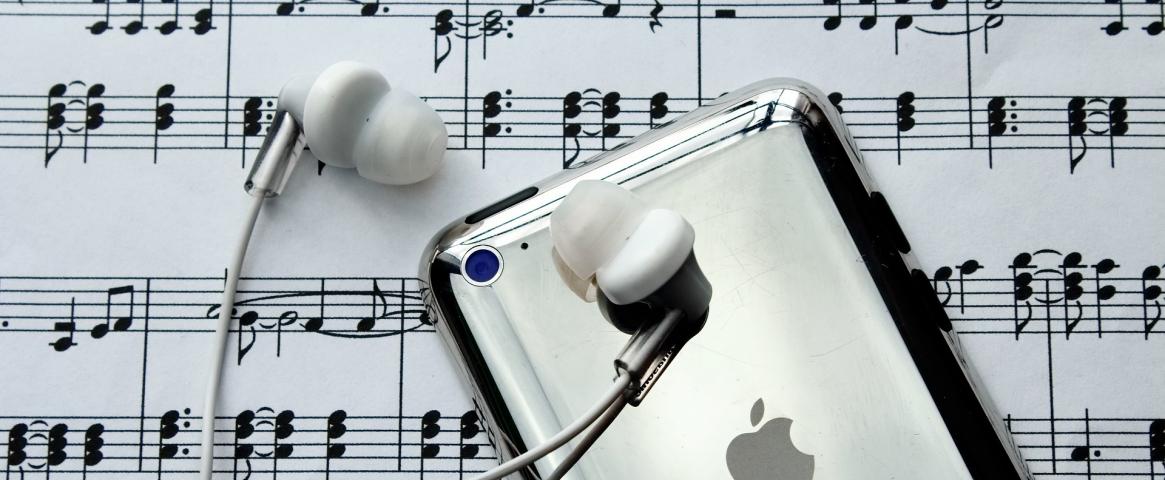By Claudia Lopez-Lloreda
SEATTLE — Though he was born 250 years ago, Ludwig van Beethoven’s music still resounds in concert halls, movies and even elevators. But his influence goes beyond music, neuroscientists say.Studies show that music therapy, listening to or playing music to improve health, decreases symptoms of depression, improves memory, and increases quality of life in people with Alzheimer’s disease and other types of dementia. Music therapy also decreases levels of the stress hormone cortisol and boosts the immune system response by increasing levels of antibodies, which improves the body’s ability to fight off infections.
“There's something about linking sounds to [brain] rewards that Beethoven must have known,” said neuroscientist Psyche Loui during a Feb. 14 talk at the American Association for the Advancement of Science (AAAS) annual meeting. During this session, researchers explored how that link between music and the brain can be better understood by considering a person’s culture and brain wiring, and how that may help improve music therapy.
People have practiced music therapy in some form or another for centuries, said Daniel Levitin, dean of arts and humanities at the Minerva Schools of the Keck Graduate Institute. But until recently, scientific support for music therapy had been anecdotal. Now, scientists are rigorously testing how music alters the brain.
People do not all respond to music the same way — some have strong physical responses, like getting chills, whereas others do not. Loui, an assistant professor at Northeastern University, wanted to understand why. Her group imaged the brains of people who reported perceiving chills in response to music and those who rarely or never did. Using an MRI technique, with the subjects at rest and without music playing, the researchers mapped the connections between auditory areas of the brain and those important for emotion and social processing.
The two group of patients had strikingly different results: in people who get chills, a wide red band ran between the two brain areas, but in people who do not get chills, a thin blue line connected the two areas. This meant that people who got chills in response to music had stronger connectivity between the parts of the brain responsible for hearing and the parts responsible for emotion, than people who did not get chills. This implies that in people who have a physical response to music, the two brain areas can communicate better and more frequently. When music turns on the auditory areas in the brain, it may also strongly activate the emotional and social aspects of a person in this group. And that may allow for more and better social connections.
In extreme cases, some people do not enjoy music, a condition called musical anhedonia. Loui found that an individual with the condition not only failed to respond to chill-inducing songs like Adele’s “Someone Like You,” but imaging showed that auditory areas in the brain were less connected to the reward centers when compared to others without musical anhedonia. Loui speculated that weak connectivity between these areas translated to impaired social interactions. For example, she found that people with musical anhedonia were less likely to enjoy other people’s company.
“I think there's a role of music in social bonding,” she said.
Adding to the spectrum of responses to music, the emotional response also varies from person to person. Although it’s often said that music is a universal language, culture influences the response to music, said Elizabeth Margulis, a professor of music at Princeton University. Margulis and her team traveled across continents to the countries of Botswana, Uruguay, and Sweden among others, to examine how people around the world perceived music. One study asked people to listen to a piece of music and then describe stories it inspired.
To the researchers’ surprise, a 16-second clip of music by Austrian composer Anton Webern evoked stories of horror and murderers among people from Fayetteville, Arkansas in the U.S., whereas it elicited stories of friends going out and playing among people from Dimen in Guizhou Province, China. (Listen to the excerpt here to see who you would agree with, or if your opinion differs from both.)
Previous experiences may determine which features of music people pay attention to and, as a consequence, how it makes them feel, Margulis said. In that case, music therapy would not work as a “one size fits all.” It may instead have to be tailored specifically to each individual.
“We're going to need to know, not just about notes and their structures, but also about how people's experiences intersect with [them],” Margulis said.
But before music therapy can become an accepted treatment by the medical community at large, more needs to be done to understand exactly how music affects the brain.
“If we know enough about the brain, we can not only use music to help the brain but also make music that is that better for the brain,” Loui said.
Does that mean doctors could prescribe daily doses of Beethoven to help Alzheimer’s patients in the future?
“We're starting to find out what that relationship might look like,” Loui said.
Claudia Lopez-Lloreda is a neuroscience Ph.D. student at the University of Pennsylvania and freelance science writer. She writes for the weekly neuroscience blog PennNeuroKnow. Follow her on Twitter @claulopezneuro or e-mail her at clopezlloreda@gmail.com.


